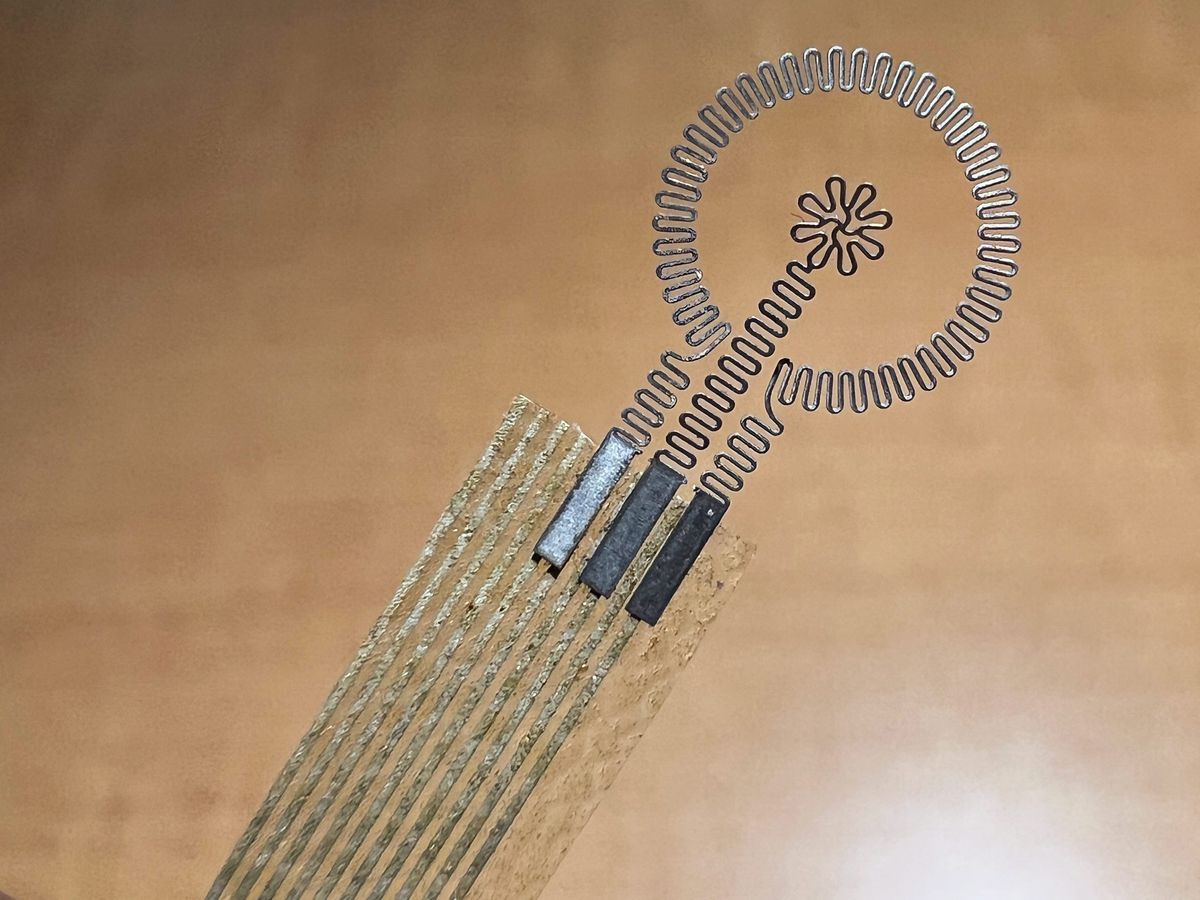Not only can electricity drive electronics, it can help people heal. The first electronic bandage the body can absorb can apply electric signals to speed the healing of wounds by 30 percent, a new study finds.
In the body, electricity helps the heart beat, causes the muscles to twitch, and allows the body to communicate with the brain. Now scientists are increasingly using electricity to promote healing with so-called electroceuticals.
In the new study, researchers focused on chronic wounds, especially those associated with diabetes. The disease leads to more than US $327 billion in health-care costs annually in the United States alone, a toll projected to grow at a rate of $1 billion per year.
Diabetic foot ulcers are a major complication that afflicts 15 to 25 percent of the roughly 30 million people living with diabetes in the United States. These and other chronic wounds linked to diabetes are the leading cause worldwide of lower-limb amputations other than those caused by accidents or injuries.
Since diabetes can result in nerve damage that leads to numbness, diabetics might experience a simple blister or scratch that goes unnoticed and untreated. Another hallmark of diabetes are high blood-sugar levels that can thicken capillary walls, which slows down blood circulation and makes it more difficult for any wounds to heal. These factors can often lead small injuries to evolve into dangerous wounds.
In the new study, researchers wanted to see if electrotherapy could help mend these chronic wounds. The inflammation associated with these wounds can disrupt the body’s normal electric signals, impeding the migration of new cells that can support the healing process.
Previous research showed that electricity could help wounds heal. However, electrotherapy devices often consisted of wired, bulky equipment that could only be used under supervision in a hospital setting. In the new study, the scientists aimed to develop a more comfortable electronic therapeutic that could be worn at home at all times of the day or night.
The new small, flexible, stretchable, wireless, battery-free electronic bandage softly wraps around injury sites. It is the first electronic bandage that is bioresorbable—that is, capable of getting absorbed by the body.
One side of the device contains two electrodes that generate an electric field between them—a tiny flower-shaped electrode that sits in the center of the wound, and a ring-shaped electrode that surrounds the entire wound. The other side of the device contains an energy-harvesting coil that powers the system via magnetic induction, a near-field-communication system that can wirelessly transmit data to a smartphone or tablet in real time and help physicians operate it remotely, and a red LED to show when the device is working.
The device also uses sensors to monitor the healing process. As wounds heal, they should dry up and become less electrically conductive. By measuring the resistance that electric current experiences across the wound, physicians can track the way that healing is progressing.
In experiments on diabetic mice, the researchers applied electrical stimulation to skin wounds for only 30 minutes a day. Even this short amount of time accelerated wound closure by 30 percent.
“The electrical stimulation is such that you do not feel any pain,” says study cosenior author Guillermo Ameer, a biomedical engineer at Northwestern University in Evanston, Ill.
One previous concern with electroceuticals is the damage that might result when removing electrical-stimulation components from wounds. In the new study, after the wound healed, the flower-shaped electrode simply dissolved into the body, eliminating the need to retrieve it.
Both of the device’s electrodes are made from molybdenum, a metal often used in electronics. The scientists discovered that when molybdenum is thin enough, it can be bioresorbed by the body.
“It was exciting to observe that the electrode could biodegrade without interfering in a negative way with the healing process,” Ameer says.
However, Ameer says, injecting a note of caution, “the device is designed to accelerate hard-to-heal wounds typical of diabetic patients. It is not intended to speed the healing of minor skin wounds in healthy individuals.”
The scientists now plan to test their electronic bandage on diabetic ulcers in larger animals. “Regenerative engineering and bioelectronics are fascinating new fields that have the potential to revolutionize health care, particularly the outcome of surgeries,” Ameer says. “Our biodegradable electrotherapy device is a step forward towards that future.”
The researchers detailed their findings online 22 February in the journal Science Advances.
- These 3 Electroceuticals Could Help You Heal Faster ›
- The Ultimate in Personalized Medicine: Your Body on a Chip - IEEE ... ›
- AI Medicine Comes to Africa's Rural Clinics - IEEE Spectrum ›
- Magnetic Gel Can Help Wounds Heal Faster - IEEE Spectrum ›
- Electroceuticals: Electrical Sutures Heal Rats' Wounds Fast - IEEE Spectrum ›
- Smart Bandage Delivers Electricity and Drugs to Heal - IEEE Spectrum ›
Charles Q. Choi is a science reporter who contributes regularly to IEEE Spectrum. He has written for Scientific American, The New York Times, Wired, and Science, among others.




